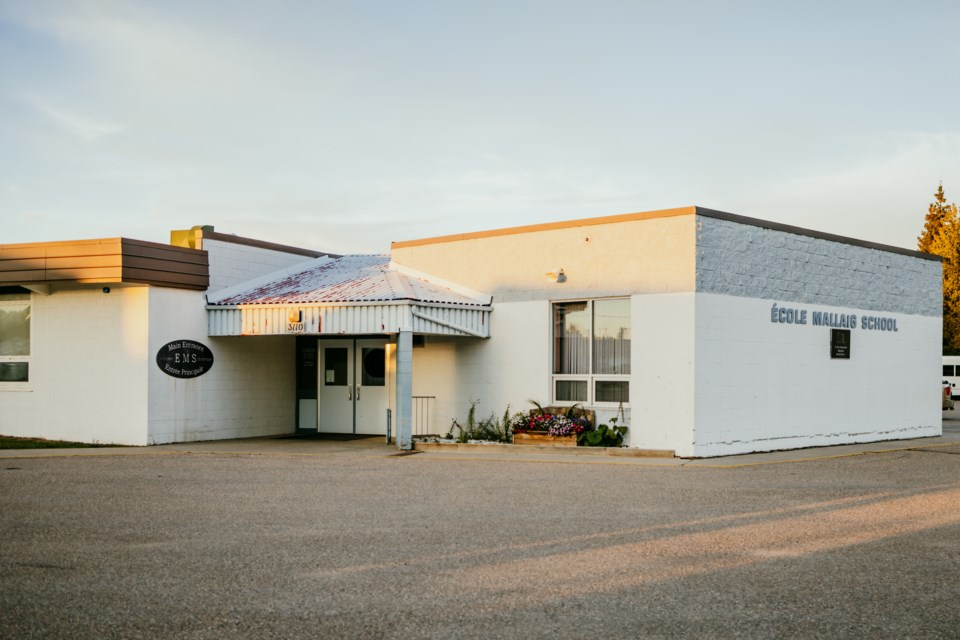MALLAIG - The introduction of the School Construction Accelerator program by the Government of Alberta means a new school will be built in Mallaig sooner than expected.
According to St. Paul Education board chair Sylvie Smyl, the news is exciting. She acknowledged that the province had been pushing to have the design phase of the new École Mallaig School done, which it now is.
Designing a school in a rural setting like Mallaig, which is a hamlet located within the County of St. Paul, is different than schools in more urban settings. The current school in Mallaig, which was built in 1956 and had additions done in 1964, 1981 and 1989 is more than just a K-12 school, it is also a community hub.
The design process reflects this. The new school will be built in a loop, which will allow for an indoor walking path that can be used by the community. Also, a public library will continue to be located at the school. A daycare space is also included in the design plan.
The school is also one of three Catholic schools that are part of St. Paul Education's combined public/Catholic school division, and a space for faith-based celebrations is included in the design.
“It’s nice to see that we are seeing new schools in rural areas," says Smyl, adding, it's also nice to know the school is at the front of the line, with 30 new schools expected to be built each year for the next three years in Alberta.
"The St. Paul School Division appreciates the expedited process for this school build, and look forward to continue working with the provincial government on accomplishing the Mallaig School build," says Smyl.
As for how construction will progress, she says that a portion of the school will continue to be used while the new school is built. At some point, some students will have to be relocated to other community buildings, but those plans are already being made, and the community is working together.
“The County [of St. Paul] has been a tremendous support in this whole process," says Smyl.
She describes the new school build as an "economic boost" for the community, and as with any investment, she is hopeful there will be a return on that investment.
"It’s an investment in our future," she says, especially at a time when many rural schools are closing their doors.
While she is unsure of an exact timeline on the project, the next step will be to put the project out to tender. Once that tender is awarded, work would be expected to begin soon after.
Provincial announcement
On Sept. 18, the province announced $8.6 billion to complete and open 200,000 new student spaces across the province in the next seven years. This means, 30 schools are expected to be built each year for the next three years, and 10 projects that were already underway have been bumped to the next stage of the process.
"This is the fastest and largest build our province can manage given the capacity of our construction workforce, and the time that it takes to permit and prepare and service available school sites," said Premier Danielle Smith, during the Wednesday morning announcement.
Along with building new schools, the program will fund the purchase of modular classrooms, and will also focus on adding more charter school spaces.
"We know that every students deserves a quality education in a school that can meet their learning needs," said Smith. She acknowledged that the School Construction Accelerator Program was "an ambitious goal."
Minister of Education Demetrios Nicolaides also spoke during the announcement, stating, "In budget '25 and in the next two subsequent budgets we will announce 30 new schools each year."
The construction of new schools "will make up a large portion of the more than 200,000 student spaces we will be delivering in the next seven years," serving public, private and francophone school boards, he added.
Modernization of existing spaces will also take place. with five to eight modernizations announced each year for three years, updating up to 16,000 spaces.
Prior to the announcement, projects would only move forward during the budget cycle, which means it would take three years to move a project through the system.
Now, when a project is ready to move forward, it'll be able to do so, and the province is asking school boards and municipalities to do their part to move projects forward and ensure school sites are ready for construction.



